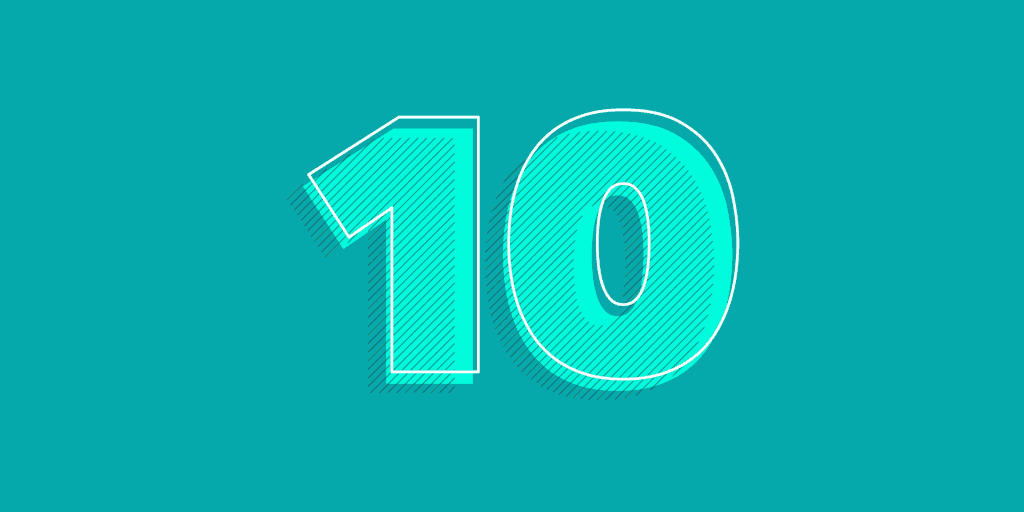Type ‘You had one job’ into Google images and you’re going to see some pretty hilarious errors.
Of course, they’re probably not hilarious to the people who made the mistakes (or those who have to foot the bill to get the errors fixed!)
The problem with these images can usually be traced back to a bad brief. Just take a look at this:

This is proof that a poor brief can be make-or-break for any project!
Everyone wants their projects to be successful. A lot of time, effort, and budget goes into creating them – whether it’s a video, an ad campaign, or anything else – and it’s great to get an amazing result and see all of your hard work paying off.
If these ‘You had one job’ images teach us anything, it’s that the first step towards success is proper planning. And when it comes to creative projects, that means creating a solid brief.
In this article we’re going to show you how to write a TRULY great creative brief – and we’re even going to throw in a template for free!
Article Contents
Why do you need a brief?
Let’s say we want you to make an ad campaign for our real estate company. That’s it. That’s all the information we give you. You don’t know whether we’re in lettings or sales, what types of properties we deal with, or who our target customers are. Nothing.
Without that key information, you aren’t going to be able to create an effective ad campaign for us. And THAT’s why briefs are important.
A brief helps you give creatives the core information they need to create an amazing end-product for you. It helps them to speak to your audience in your language, and get your most important messages across clearly.
10 Things to include in your brief

You’re so enveloped in your business that it can be easy to forget that not everyone understands the terminology you use, or knows the importance of certain features over others.
A brief helps you to look at your company through the eyes of someone new in order to present the information needed to create a great project. Here are 10 things to include in your brief…
1. Overview of your company
First things first, you need to introduce your company. You don’t need to go into too much detail here. A short paragraph about your company background, who you are, and what you do should be enough to give creative teams the insight they need to get started.
2. The problem
Ask yourself what problem you’re solving. What is the reason you are making this project?
It’s important to include this in your brief so that the creative team can understand the issues that your audience is facing and appropriately highlight them within your project.
3. The solutions
Similarly, you should also include information about how your product/service/brand solves the problems faced by your customers.
This is the place to list the benefits of your product/service/brand and shout about what makes you great!
4. Project specifics
In addition to problems and solutions, you should also make space to list any other project specifics that you want to include. This is the best place to include the unique selling points (USPs) that make your brand/product/service better than your competitors.
We’d recommend limiting your USPs to the 3 or 4 most important things you want to mention – any more could overwhelm your creative team.
5. Brand voice
When a team is making creative material for you (or any type of content) it’s important that they know how to write in your brand voice. Be sure to include any tone of voice documents or even just a couple of keywords that highlight how you like to communicate with your audience – e.g. authoritative, casual, inspirational etc.
6. Target audience
In addition to knowing how your brand speaks, creative teams also need to know who you’re speaking to.
If you have any buyer personas or customer profiles then include them in your brief. If you don’t, then a couple of keywords will work here too – e.g. ‘active women over 50.’
7. Deadline
It’s important to be upfront about your schedule before you get started on your project, so if you have a deadline make sure you include it in your brief.
You should also be clear about whether this is just an ‘ideal’ deadline or a deadline for a specific purpose, for example a trade show or your website launch date.
8. Goals
Writing down your objectives for the project can help you to prioritise them and also understand what you need to do in order to achieve them.
So ask yourself, what do you want to achieve? Why do you want to start working on this project?
Don’t be afraid to be ambitious here. If you want to create a social ad campaign that increases your followers by 10K, write that down – it may seem like a stretch, but you never know what could happen!
9. Brand Guidelines
Including a link to your brand guidelines in your brief can ensure that the creative team sticks to any brand rules that you have, with regards to either tone of voice or in terms of design and style.
10. Comparable Content
Finally, if you’ve seen any content that has inspired you then share it with your creative team. This can be some competitor content that you loved (or were envious of!), or it can be something that you really liked the style of.
If you’ve seen anything you’ve seen that impressed you, or told a story in a way that you want to emulate, include it in your brief so that your creative team can see it and get on the same page.
5 Tips for a TRULY great creative brief!

So, now you know what to include in your brief. But how do you make each section even more impactful?
Here are our top tips for a truly great creative brief…
1. Be thorough
Always keep in mind that the person or team reading your brief could be hearing about your company for their first time. And, if you work in a complex or emerging industry then they may not have any experience with that either.
Be considerate of this and include as much context in your brief as you can. For example, if you’re a rocket scientist then you’re probably going to need to explain a couple of terms and phrases to your creative team!
2. Be succinct
It may seem impossible to be thorough and succinct, but it’s doable – and makes for a really awesome brief!
While you’re being as thorough as you can with the background of your company or your needs for this project, it’s important that you don’t go too far. Don’t just copy and paste reams of text from your website – that won’t be helpful for the team reading the brief.
Instead, try and condense what you want to say in the easiest and simplest way you can. This will help people understand your project better and get everything moving forward more quickly.
3. Take professional advice
It’s a safe assumption that the person or team you’re sending your brief to already has a lot of experience in reading briefs and turning them into something amazing. So if they give you advice on how to best fill in your brief, take it!
For example, if they tell you that your company overview is too long or that you haven’t been specific enough with your USPs, don’t be offended by this. Instead, take their professional advice and make changes.
After all, everyone is on the same team here and wants the same result: an amazing creative project to be proud of!
4. Look for inspiration
One of the most helpful things you can include in a brief is inspiration – both of projects you love and of projects you hate!
Including something you like, with a little explanation (for example, “I like this design style because…” or “I like that sharp messaging because…”), will help creative teams visualise what it is you want. And, similarly, showing them projects you don’t like will inform them of what to avoid.
This can help to speed everything along and make sure you’re all on the same page before getting started.
5. Be transparent
Before getting started on your project, it’s important to be upfront about timeframes, budget, and any other restrictions you may have. Being transparent straight out the gate can save both you and the creative company a lot of time and stress.
For example, if you need your project to be completed in the next two weeks, make sure you include that in the brief. Otherwise, you may find yourself very disappointed if that isn’t feasible and you’ve already received a bill for a project that is going to miss its deadline.
Final thoughts
Writing a brief can seem like a chore – an unfortunate hurdle that you need to climb over in order to get to the amazing content or project on the other side. But, if you approach it correctly, it can actually be kind of fun!
The steps outlined in this article should better equip you to write a truly great creative brief, but if you need more help then why not download our free template?
We’ve done all the tough stuff. We’ve outlined the questions and even added a little design to make it look great. All you have to do is make a copy and fill it in with your own answers!

